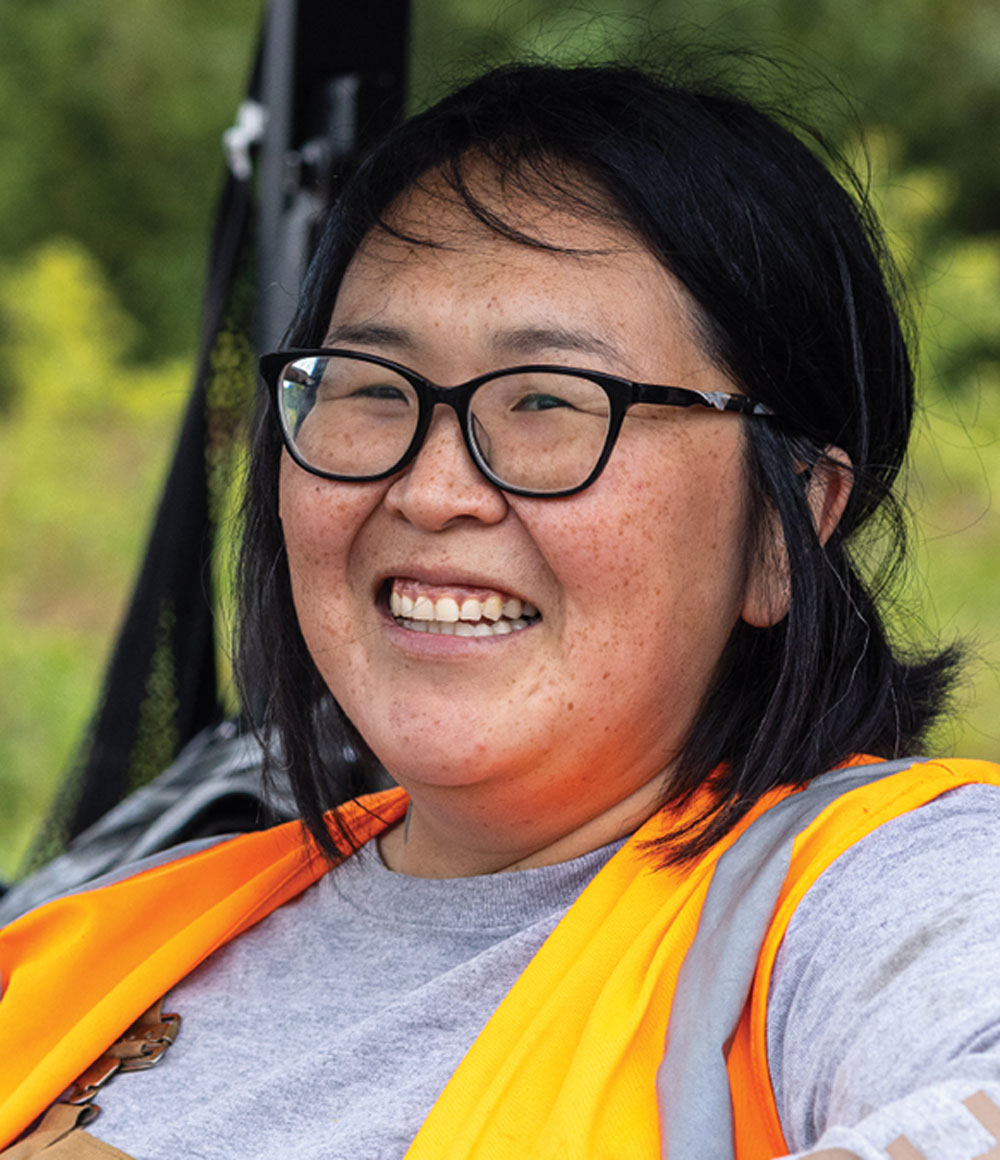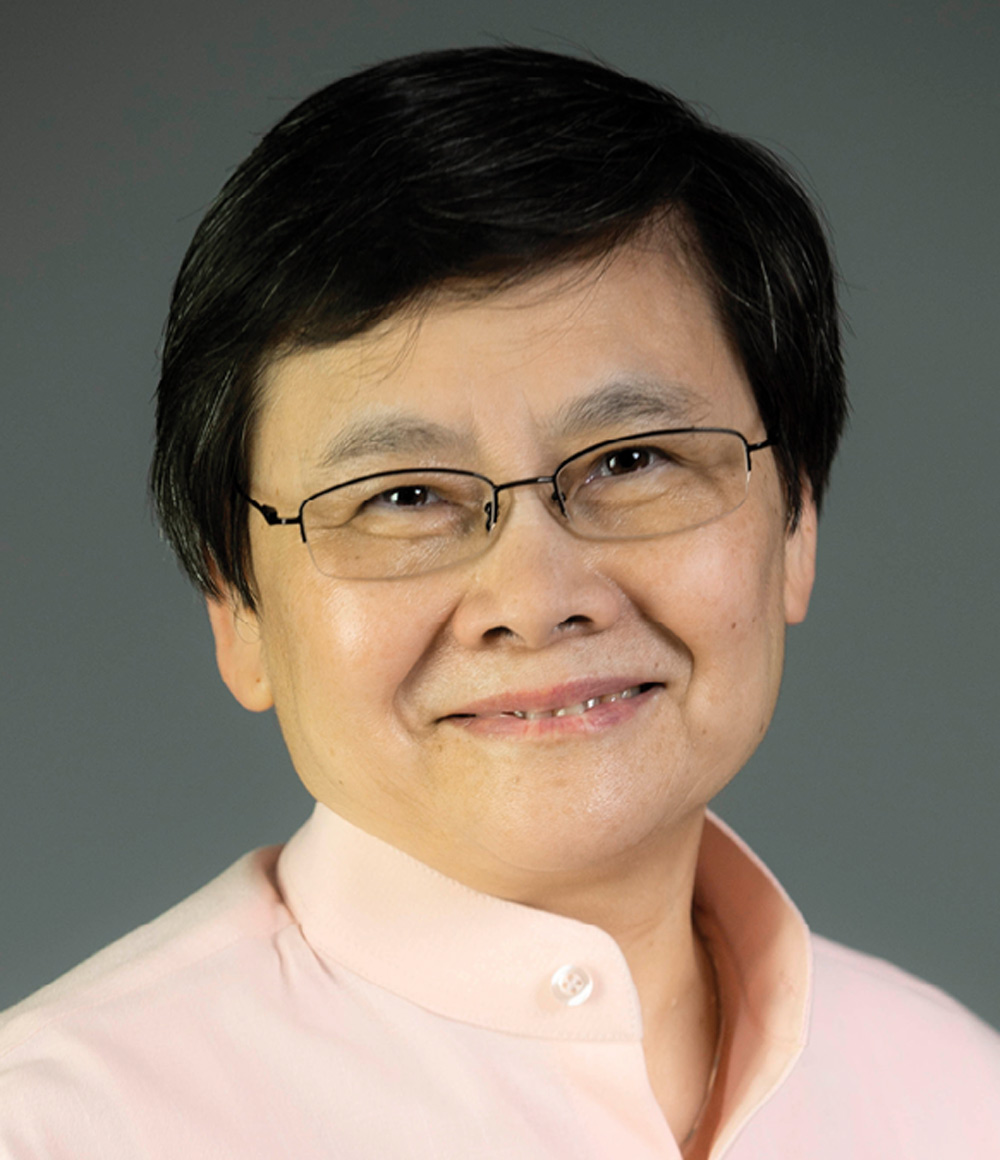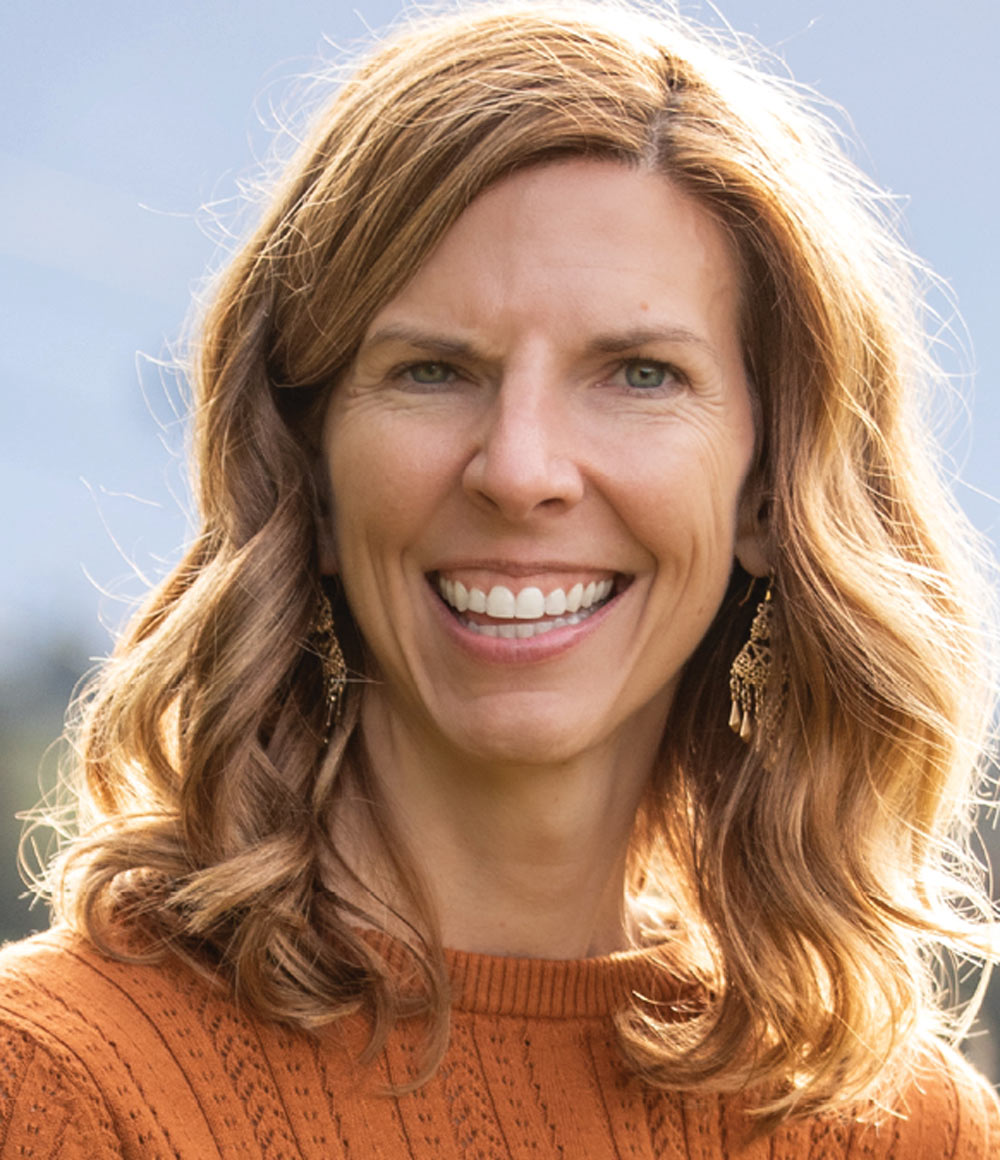Photo provided by National Association of Women in Construction
Photo provided by National Association of Women in Construction Alaska Chapter
or twenty years the National Association of Women in Construction, or NAWIC, has celebrated, promoted and educated the public about the role of women in the industry with Women in Construction Week, held in March. Locally, Alaska’s NAWIC chapter highlights the achievements of women who work across all fields of the industry with the Constructive Women Award.
This year, seventeen women were nominated by their peers. Of the six Constructive Women Award winners, five were from Associated General Contractors, or AGC, of Alaska member companies.
We reached out to each of them to learn more about their achievements, how they navigate the changing landscape of Alaska’s construction industry—and what advice they have for future “constructive” women.
Director,
Alaska Laborers Training School
Apprentices in the program get paid while they learn on the job; meanwhile, contractors “benefit by having a steady, well-trained and skilled workforce,” says McCarthy. The state benefits as a whole, too, since students mostly engage in public works projects such as building highways, bridges, ports, and more.
McCarthy is passionate about recruiting even more people into the construction industry—particularly women.
“Women always get paid equally in construction, which is not true for so many other career pathways,” she says.
As a member of NAWIC, she says she is part of a “group of strong women who work in today’s industry and are paving the way for other women to enter and advance.”
She highlights NAWIC’s mission of increasing recruitment, retention, and development of women in construction. “I am boots-on-the-ground, making that happen throughout Alaska,” she says.
Superintendent,
HC Contractors
Fast-forward to today: She’s overseeing large-scale road construction projects, working on overpasses and complex at-grade interchanges like the Gaffney Road/Airport Way/Richardson Highway/Steese Expressway, or GARS, project—which HC Contractors completed in almost half the projected time.
“That’s a career highlight,” Kuykendall says. “Putting together a crew that can accomplish goals is key, [and] I have a pretty great team here at HC.”
The work Kuykendall’s team did on the GARS project exemplifies her expertise. With more than 26,000 vehicles crossing the project every day, as well as significant design challenges, Kuykendall not only delivered the work a year ahead of schedule but ensured continuous safe access for the public throughout construction.
In her short tenure with HC Contractors—just four years—Kuykendall has overseen and completed complex heavy civil projects in the Fairbanks area, exceeding $74 million in contract revenue. She was singled out by her nominators for her ability to lead under pressure, prioritize safety, and integrate the latest construction technology to drive performance.
When asked for advice for other women wanting to work in the field, she shares, “I would have a lot to say. But in short, I’d tell them: Respect yourself and the people you work with.”
Journeyman Electrician,
Alaska Native Tribal Health Consortium
She’s also an inspiration, not just to women who might consider a career in construction but to Alaska Native men and women who, like her, are faced with the challenge of how to get much-needed, basic health and safety services to their remote villages.
Ayapan is a living example of how to pursue a career and care for her hometown: she plays a crucial role in building water and wastewater projects that reduce the incidence of infection in remote Alaska. Through her work, more than 350 homes in rural Alaska now have safe drinking water.
Projects Ayapan has led and worked on have eliminated the need for residents of villages like Akiakchak, New Stuyahok, and Koyuk to haul water and use honey buckets.
Thanks to an appearance in a short film aimed at inspiring students in rural schools to consider construction careers, Ayapan is motivating a new generation of potential trade workers. One young woman from Tunanak specifically cited Ayapan as the reason she’s now pursuing a career as an electrician.
Principal Electrical Engineer,
RSA Engineering
Today, she leads projects that deliver technically advanced and reliable electrical design to a number of sectors, including healthcare, retail, housing, and mixed-use facilities. She also provides electrical engineering solutions to education, government, and industrial markets.
One of her most notable jobs was representing RSA as an on-site construction inspector for the US Navy at the South Pole in Antarctica in 2001;there, she designed electrical systems for the Cryogen and Balloon Inflation Facilities. She was repeatedly asked by the US Navy to return and ultimately completed three tours, earning the respect of her peers for her meticulous attention to detail and ability to excel in extreme conditions.
“Define what you want to achieve in your career and create a roadmap to reach those goals,” Ta advises other women entering the construction industry. “Find a mentor who can offer guidance, support, and advice based on their won experiences.”
Ta acts as a mentor and guide herself, fostering professional development opportunities for her team. Early on, she led and trained teams of young engineers at RSA, some of whom went on to become part of the firm’s leadership.
She continues to play a key role in developing RSA Engineering’s next generation of electrical engineers, sharing her expertise and her experience as the firm’s first female electrical engineer. A trailblazer who has worked on RSA’s most complex projects, Ta notes, “[It’s important] to trust your abilities and skills, then define what you want, keep learning—and prioritize your own well-being.”
Operations Manager,
Ahtna Infrastructure & Technologies, LLC
She never thought she’d work in construction. But when she took an administrative job with Ahtna’s Environmental group, she discovered she liked problem solving and enjoyed the challenges the field presented her; soon, she says, she was deliberately pursuing a career “where I could see the results of my work and feel like I was contributing to something bigger.”
Today, Ford manages the construction efforts for nine different companies under Ahtna Diversified Holdings. She supervises staff deployment, travel, lodging, and—above all—safety in support of project delivery in some of the most remote locations in Alaska, including locales in the Aleutian Chain and around the Pacific Rim.
The people she works with mean the most to Ford. “Creating a team that’s safer and stronger is what motivates me every day. It’s the connections we make and the way we support each other that really matters. I am proud of the contributions I’ve made here in creating a culture where everyone feels like they matter.”
Ford’s role as “the glue that holds the company together,” as her nominators characterized her, is evident in the care she puts into ensuring every individual is supported. Her nominators highlighted one instance when she acted quickly to help a remote employee who was struggling with mental health issues to evacuate from the project site and find treatment, then seamlessly return to work when they were ready.
Ford’s advice for other women in the industry reflects her natural empathy. “Your presence matters more than you know. Your work product will speak for itself—but don’t be afraid to speak up, too. And if you ever find yourself wondering whether you belong—trust me, you do.”
Congratulations to all the Constructive Women of 2025, including UIC Nappairit Project Engineer/Manager Brianna Carlson, who are paving the way for more opportunities for more women in construction.




